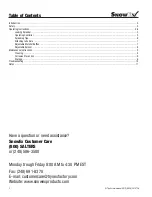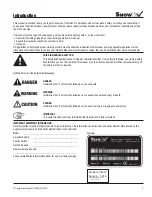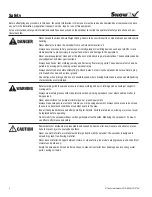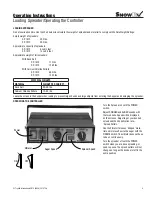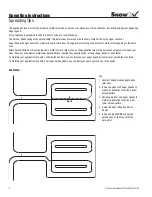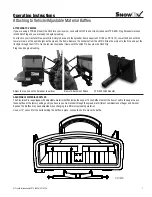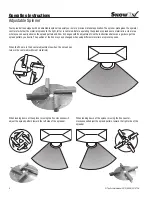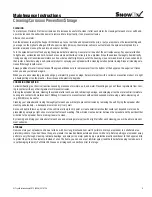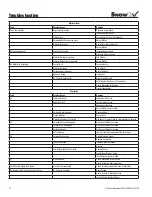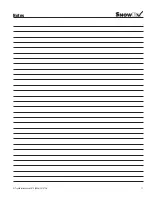
9
© TrynEx International 2013 (REV A) F51073A
Maintenance Instructions
Cleaning/Corrosion Prevention/Storage
To protect your Precision Pro from corrosion and to increase its useful life, clean it after each storm. By cleaning after each storm, salt build-
up will be less and the salt will be easier to remove. More importantly, it can prevent corrosion.
After each snow storm:
Run the spreader to empty the hopper. Either back up to your salt pile and spread into the pile; or put your spinner on the lowest setting and
your auger on the highest setting until the hopper is empty (this way, the material will come out faster and the spinner will spread it in a
smaller area) and clean up the salt into a bucket or Salt Box.
Turn the spreader control off and unplug the spreader before cleaning. Use water to rinse all of the salt residue away. Pay special attention
to tight areas, enclosures and hard-to reach areas where salt build-up is likely to be a problem. Rinse these areas thoroughly. Avoid directly
rinsing openings in transmissions/motors, such as where a shaft might come out of the housing. Use a car wash brush to clean salt and dirt
that is stuck. Consider using a salt-removal product or spraying your spreader with a cleaning solution before rinsing. Rinse all cleaning solu-
tions off thoroughly with water.
Sweep puddles of water from surfaces of the spreader. Make sure to remove water from the bottom of the hopper so the auger isn’t frozen
when you use your spreader again.
When you are done cleaning, grease bearings; put dielectric grease on plugs. Spray metal parts with a corrosion prevention product or a light
oil. Avoid getting oil on the plastic – this will cause the plastic to degrade.
Corrosion/Rusting is a chemical reaction caused by presence of moisture, salt, and metal. Preventing any one of these ingredients from com-
ing in contact with any other ingredient will prevent corrosion.
Storing the spreader indoors, cleaning the spreader after each use and, lubricating bearings, and spraying oil on the metal will limit moisture
coming into contact with metal and salt. Although it is easier to prevent contact with salt and exposed metal, using a water-displacing oil
(e.g. WD-40) may be useful.
Cleaning your spreader and rinsing thoroughly after each use will help to prevent corrosion by removing the salt. Drying the spreader after
cleaning will also help – a backpack blower can dry it very well.
Rocks and debris thrown up by tires of the vehicle are likely to chip paint or create small scratches that could rust. Exposed metal can be
prevented by spraying a light oil on metal parts after each washing. This will also create a barrier between the spreader and the salt dust that
will stick to the spreader frame, making it easier to clean.
By cleaning and drying your spreader after each use and spraying metal parts with a light oil after each cleaning, you will be able to prevent
most corrosion.
How you store your spreader can have a lot to do with how long it lasts and how well it performs. Store your spreader in a sheltered area,
preferably indoors. If you don’t have the space, elevate it on wooden blocks outside and cover with a tarp. Before putting your spreader away,
perform a very thorough cleaning, lubricate bearings, and spray oil on metal parts. Apply a protective plastic conditioner to the hopper and lid
to protect them from the elements. Instead of oil on the frame, you can use a rust inhibitor spray (read the label before using to make sure it
is not damaging to paint). Put Dielectric Grease on all plugs and connections prior to storage.
CLEANING
CORROSION PREVENTION
STORAGE
Summary of Contents for SnowEx Precision Pro SP-1675
Page 11: ...11 TrynEx International 2013 REV A F51073A Notes...
Page 12: ...133009...


